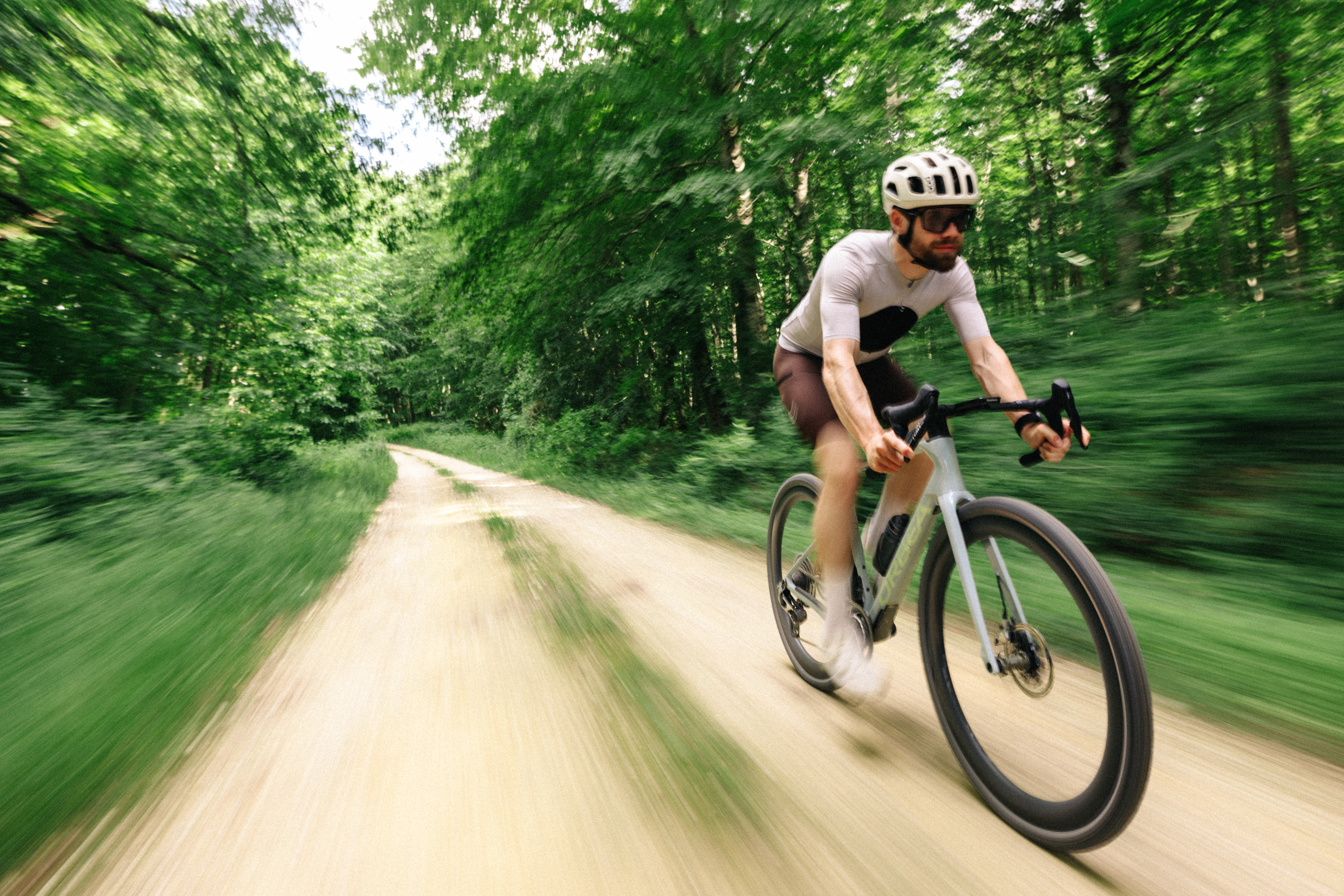Early Verdict
Orbea has transformed its versatile gravel bike into a sharp and engaging race machine
Pros
- +
Sharp and reactive ride feel
- +
Comfortable one-piece integrated handlebar
- +
Lightweight
- +
Component and colour customisation
Cons
- -
No internal storage
You can trust Cyclingnews
Gravel is more of a catch-all term these days; the umbrella of gravel can cover everything from rugged off-road adventures to hitting the redline as you battle for position in an off-road peloton. As the gravel world expands, the needs of different riders have seen gravel bikes diversify.
This spectrum of gravel has prompted Orbea to split its gravel bike lineage into two different evolutions. On the adventure side is the recently updated Terra, continuing the essence of the Gen 2 with its built-in frame storage, additional mounting points and wide tyre clearance that is aimed at adventure and ultra-distance riding. The Terra Race is a completely new gravel bike for Orbea that has been designed specifically for gravel racing, featuring more aggressive geometry and a focus on performance.
We got our first glimpse of the Terra Race at Unbound where a then-unknown Orbea gravel bike was hiding in plain sight in Emporia last month, where our roving Tech reporter Josh managed to get a few detailed shots of Morgan Aguirre’s new bike which featured an all-new frame and some unreleased OQUO carbon gravel race wheelset. I got to have a hands-on look and a first ride aboard the new Orbea Terra Race at Orbea’s press camp earlier in the month, so let's dig into the details.
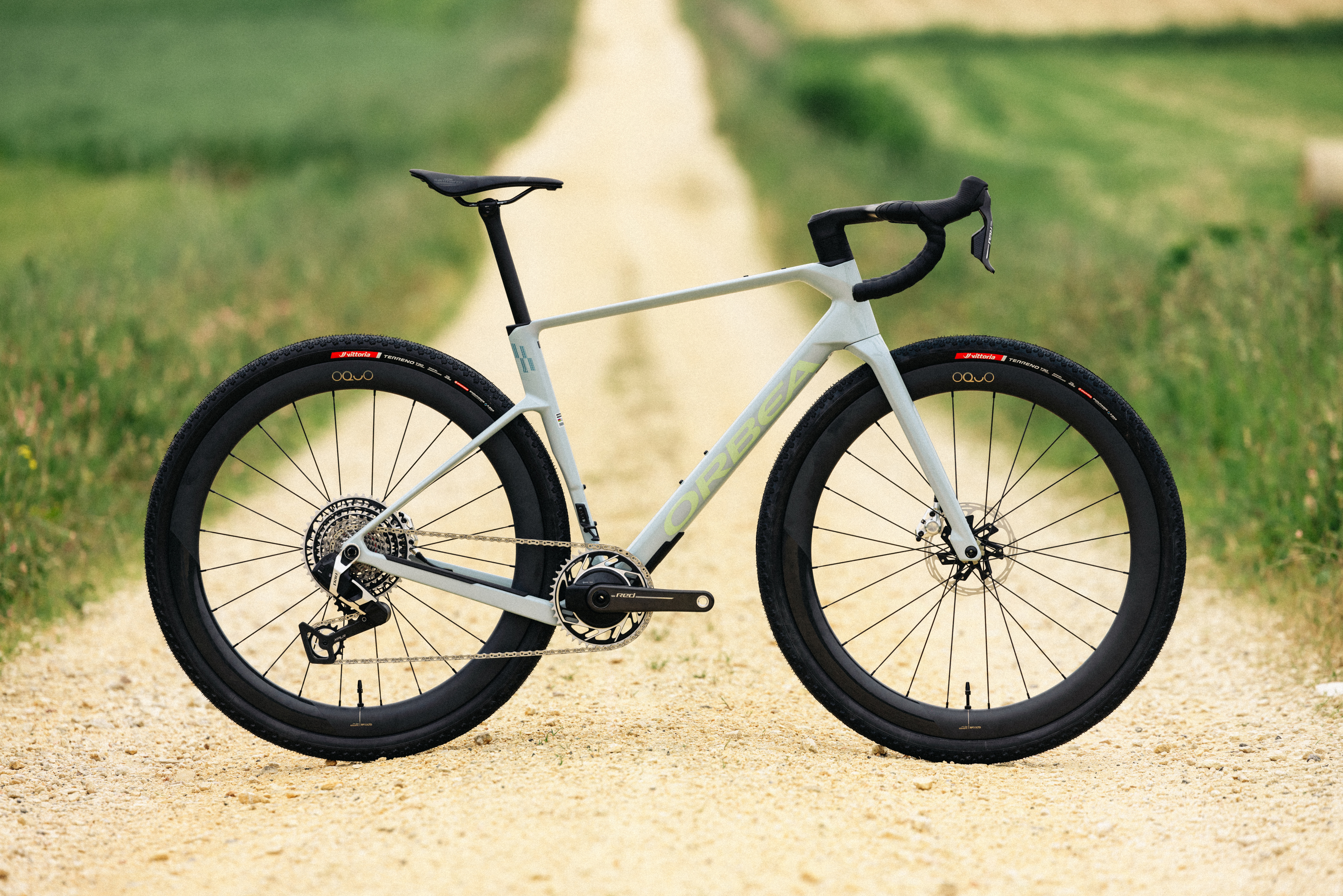
Design and Aesthetics
Orbea was keen to stress that this is an all-new gravel bike format, with a frameset designed specifically for racing. On the surface, the new bike shares a lot in common with the previous generation of Terra. The geometry isn’t wildly different, nor is the tyre clearance and although the tube shapes have been remodelled, they aren’t as aero-focused as some of the more radical gravel bikes like the new Cervelo Aspero-5, Factor Ostro Gravel or any generation of 3T’s genre-inspiring Exploro. Dig a bit deeper into the Terra Race’s tech and there are a load of changes that have been made in Orbea’s pursuit of racey performance.
The Terra Race has been made lighter, with a frame now coming in under 1kg. Unlike the Terra, which uses Orbea’s OMR carbon, the Terra Race uses a higher modulus OMX level carbon to drop the frame weight by 300g and increase frame stiffness.
Being a race-spec bike, aerodynamics have also been a consideration for Orbea, although the focus on aerodynamics has been predominantly targeted at the components and rider position, rather than aggressive kammtail tubing. As the rider is the biggest contributor to drag, this should give Orbea a better return on investment and help maintain the ride quality of the frame. Up front, the Terra Race isn’t dissimilar to Orbea’s Orca road bike with the angular junction between head tube, top tube and downtube. Towards the rear, there are dropped stays to aid compliance and a smoothly integrated internal seat clamp is housed in a short aero section of the seat tube, securing a standard 27.2 round seatpost.
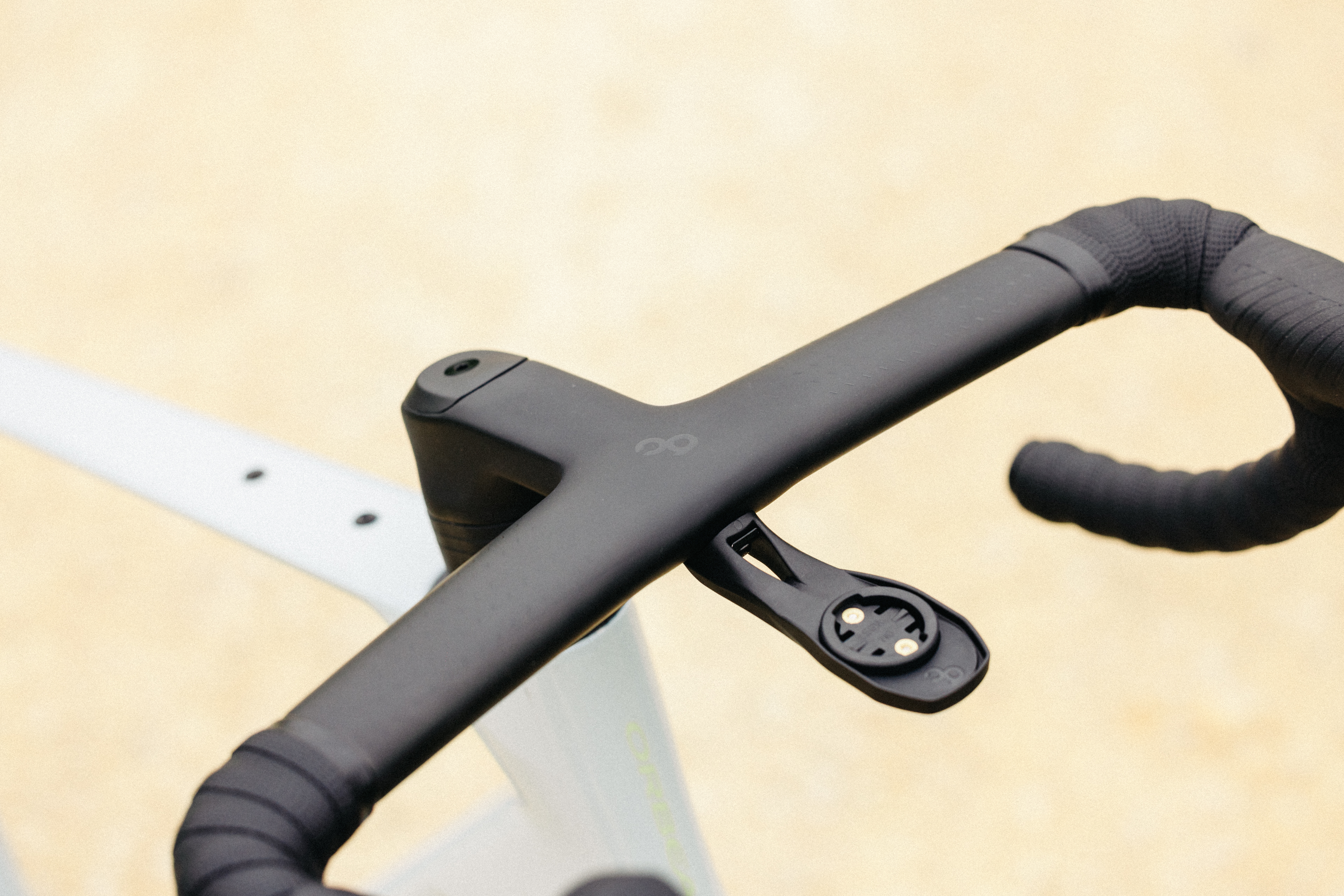
Up front is an integrated carbon handlebar weighing 314g (400/10), which Orbea claims is one of the lightest handlebars in the world. Weight is kept to a minimum as it’s only electronically groupset compatible, so it doesn’t require the extra internal cable burrowing for mechanical groupsets. The top sections are flattened and brake hoses are fully internal for aerodynamics. Eleven sizes are available from 360mm/80mm to 400mm/130mm) and uses a proprietary GPS mount with tilt adjustment that's compatible with Garmin and Wahoo’s largest computers.
The latest race content, interviews, features, reviews and expert buying guides, direct to your inbox!
New geometry sees minor tweaks from the previous Terra, with the only significant changes being 10mm less stack for a more aggressive aero position. The seat tube has also been steepened by just half a degree and the size-specific fork trail has been marginally increased to slow the handling by a tiny bit. Other than that, the numbers are very close to the Terra Gen 2 with a 71-degree head angle, 389mm reach, 78mm bottom bracket drop and 420mm chainstay on a medium frame.

Tyre clearance is claimed at 45mm (40mm if you spec a road 2x chainset) with 6mm clearance to try and stop wheels from being clogged, you could probably push tyre size up to 50mm if you don’t mind a bit of rubbing, remember rubbing is racing. These days 45mm might seem like it's on a small size with gravel racing moving to bigger tyres for reduced rolling resistance, something which we have proven with our own gravel tyre lab testing. Orbea was keen to point out that although you see many of the pros squeezing big tyres into their bikes, the bikes themselves are usually only quoted to clear around 45 to 50mm – even fat tyre evangelist Dylan Johnson’s Felt Breed is only quoted to clear a 50mm. As the Terra Race adheres to ETRO recommended mud clearances, if you are happy to risk your paint work, it should be possible to squeeze a little more tyre in there.
Max tyre stated tyre clearance is still achievable with a 50t single front ring or a gravel double with up to a 36t inner chainring. We still see some gravel racers opting for road groupsets and the Terra Race can be fitted with a road spaced double with up to a 36t chainring, although this will reduce tyre clearance to 40mm. At the rear, the Terra Race benefits from the addition of a UDH (Universal Derailleur Hanger) so it can run SRAM’s T-Type drivetrains.
It's a little disappointing not to see any internal frame storage featured on the Terra Race, however, removing the downtube storage likely helped Orbea drop the overall frame weight lower. There aren’t any bosses on the underside of the downtube either, although there are top tube bag bosses if you need to add a little more storage.
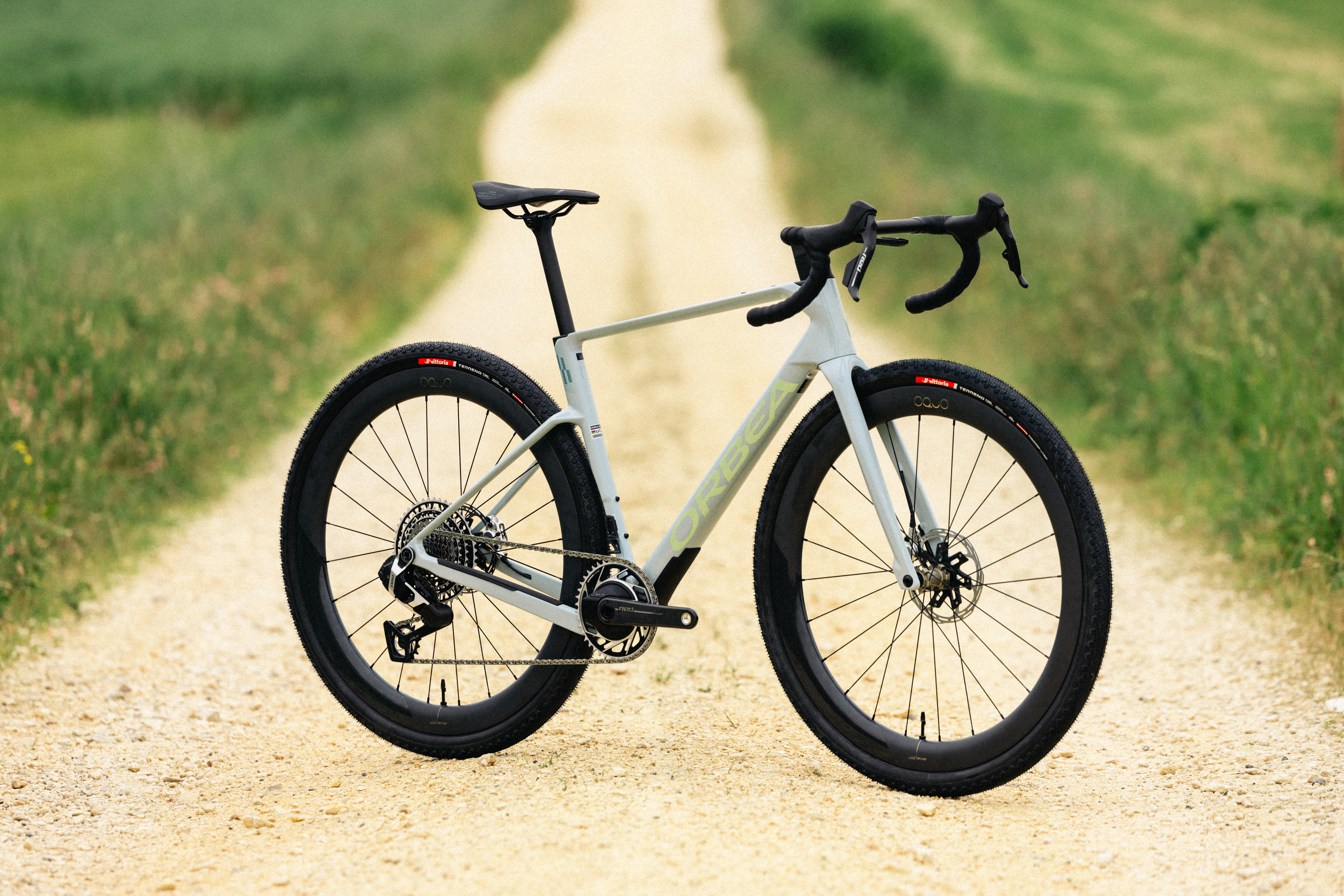
Specifications
Orbea offers the Terra Race in five different builds and I was treated to the top-spec Terra Race M11eLTD 1X bike for my test ride at the Orbea Terra press event a few weeks ago. That bike featured SRAM’s Red XPLR AXS 13-speed groupset complete with the SRAM Red XPLR AXS Dub Wide PowerMeter. If you don’t need the prestige of SRAM Red and you're not interested in monitoring your power output, the Terra Race M21eLTD 1X moves to SRAM Force XPLR AXS groupset and sacrifices a powermeter to save some cash.
Shimano takes care of double chainset duties on the mid-range Terra Race M20iLTD with its GRX Di2 RX825 2x12 speed groupset. Below this, there is the SRAM Rival XPLR AXS 13 speed Terra Race M31eLTD 1X and the entry point Terra Race M20LTD is the only mechanical drivetrain bike in the range and uses a Shimano GRX RX820 2x12 groupset.
All models feature some new 50mm Oquo wheels. Oquo’s RP50 Performance aero wheelset (1421g) was raced on the cobbled Classics this year by Lotto Dstny due to its performance and reliability. The wheels use a 50mm profile with a 25mm internal rim width. The rims are laced to either Oquo’s own lightweight Q10 hubset, which are manufactured in the Basque Country, or a Zipp hubset using 48 Sapim Cx-Ray T-Shape spokes. All the bikes are shod with Vittoria Terreno T30 fine loose Gravel Endurance G2 gravel tyres in a 40mm width. Up front, the Terra Race models get the new integrated carbon handlebar, apart from the lowest spec model which uses Orbea’s OC Gravel GR10 Carbon handlebar and OC Road Performance stem as it requires mechanical drivetrain routing.
If the choice of three different colour options for each bike isn’t enough, Orbea’s MyO service allows you to customise your bike to your own colours.
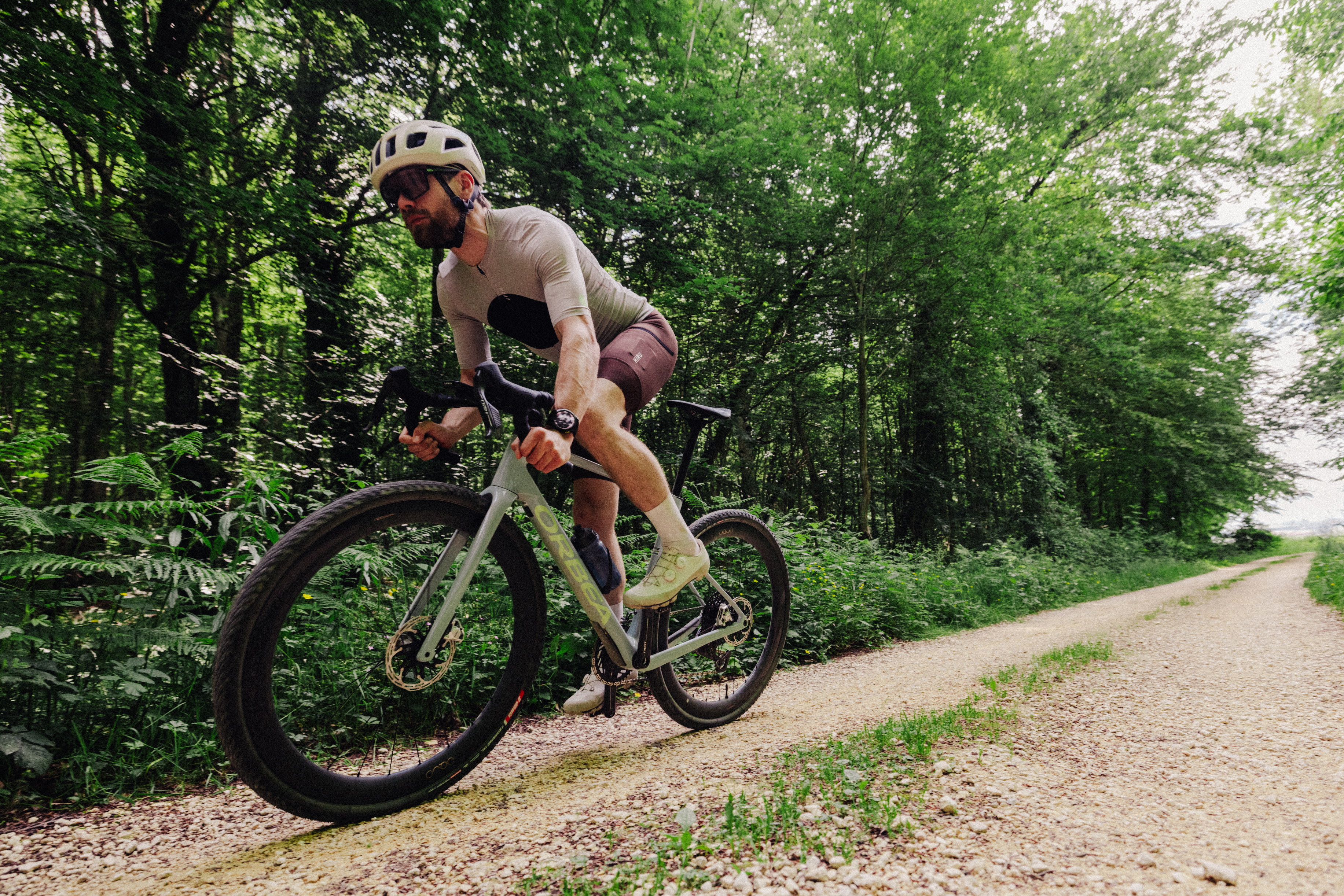
First impressions
Orbea invited me to the Basque Country to ride the new Terra Race M11e LTD 1X. The route we rode took us along the gently rolling gravel trails around Vitoria-Gasteiz, with the types of smooth gravel grading you would be likely to find on a gravel race route. My experience with the Terra Race is only based on a single ride, so this is only my initial impression. I will be getting my hands on the bike soon so expect a full review once I have clocked up some more miles on my local trails.
As the geometry is similar to the now endurance-oriented Terra, handling has the same natural confidence with a little extra sharpness from the shorter wheelbase and smaller trail number. That gives it a little more liveliness that's going to be welcomed when you're elbow to elbow with your fellow racer, jostling for position and dodging potholes.
The added lightness combined with the taughter OMX carbon construction, only further adds to the peppiness. Stomping on the pedals enthusiastically lunges the bike forwards, helping you open up gaps and accelerate out of corners. While our test route didn’t include any significant ascents, I suspect the lightness would also make the Terra an exceptional climber.
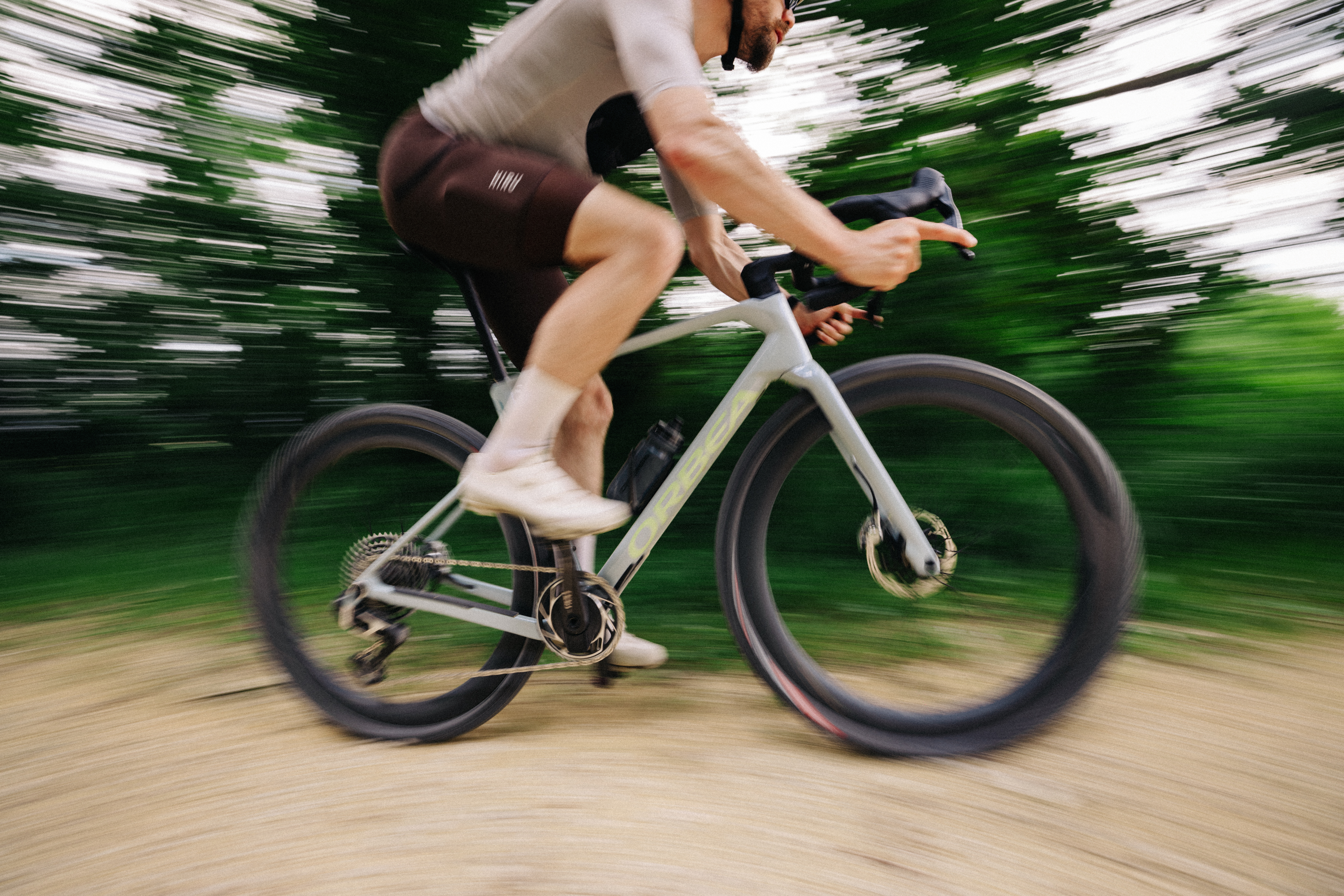
Race bikes with stiffer carbon and deep-section wheels are never going to be the most forgiving but the Terra Race didn’t strike me as being all that uncomfortable. The exact compliance contributor is hard to pin down although the combination of slender dropped seat stays and round seatpost will certainly help. The handlebar also impressed, noticeably filtering out a decent amount of trail buzz without sacrificing steering precision.
Cruising speed felt pretty effortless and I was able to tap along the flat gravel tracks at a decent speed with little effort. As the frame doesn’t actively chase ultimate aero, I suspect the biggest contributor, besides the revised aggressive position, is the Oquo 50mm deep wheels and fast rolling Vittoria semi-slick tyres.
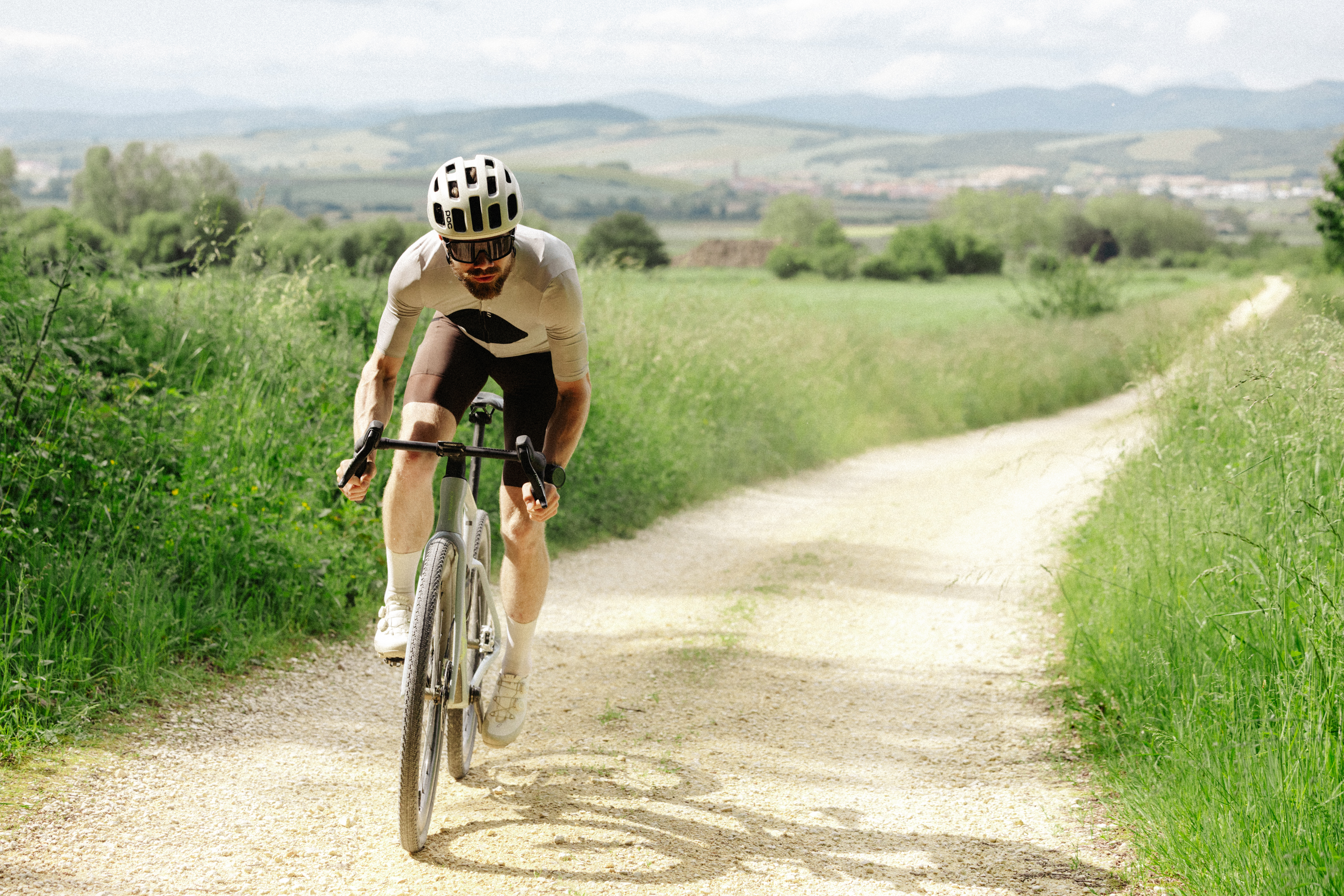
Initial verdict
From the outside, it may not look as radically racey as some of its peers, but the Terra Race has been specifically designed for going fast and the more aggressive nature and spritely nature is going to greatly appeal to racers and sporty weekend warriors, like myself, who prefer their gravel rides to be fast. That doesn’t necessarily mean this is the bike you should get, the Terra Gen 3 has much of the same performance but brings with it practical features like additional storage, luggage mounting options and bigger tyre clearance. You have to ask yourself, is chasing the fastest version actually the best option for the riding that you do?
Unless you're actively competing, the Terra is probably the sensible choice but sometimes the heart wants what the heart wants. For those who take racing seriously, or simply want a properly fast and engaging gravel bike, the marginal gains in performance afforded by stripping back the Terra Race are going to be well worth it. Whether you choose the Terra Race as a tool for competition or because you just want to have the fastest version of the Terra, based on my initial impressions, you're not going to be disappointed.
Graham has been part of the Cyclingnews team since January 2020. He has mountain biking at his core and can mostly be found bikepacking around Scotland or exploring the steep trails around the Tweed Valley. Not afraid of a challenge, Graham has gained a reputation for riding fixed gear bikes both too far and often in inappropriate places.
You must confirm your public display name before commenting
Please logout and then login again, you will then be prompted to enter your display name.
